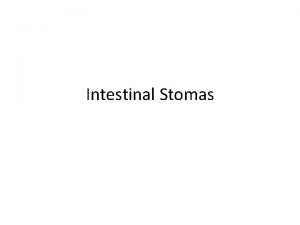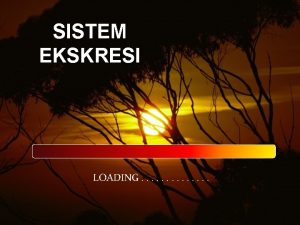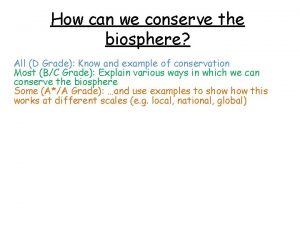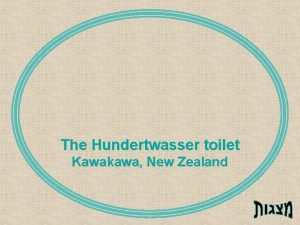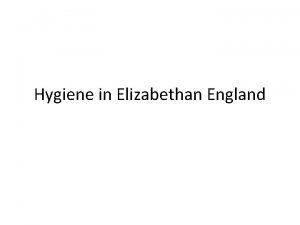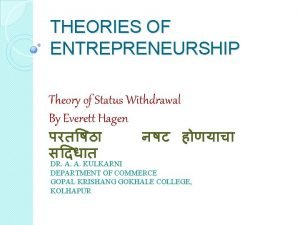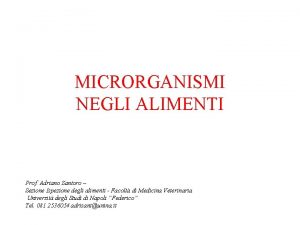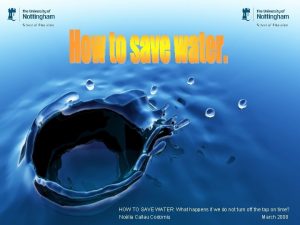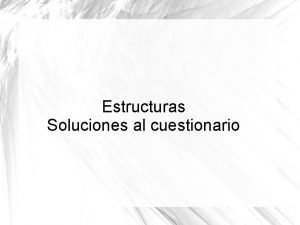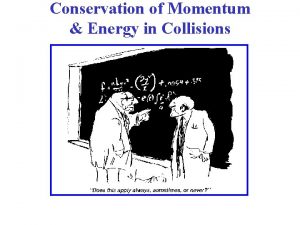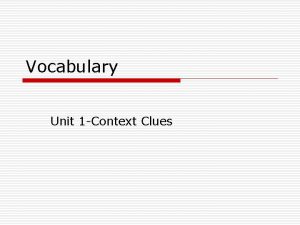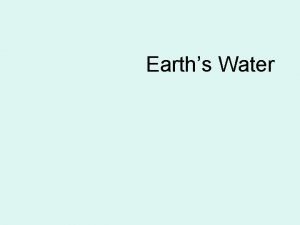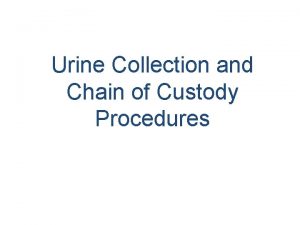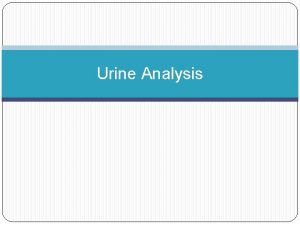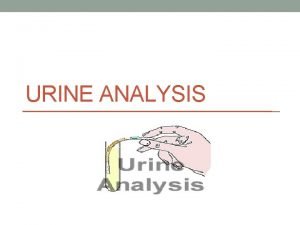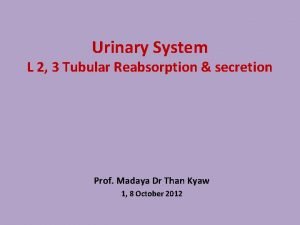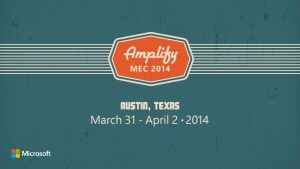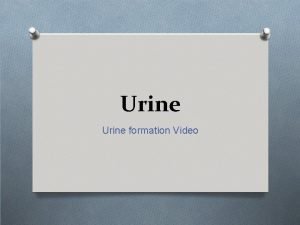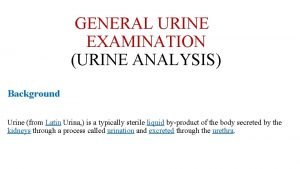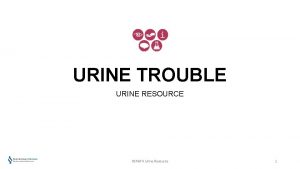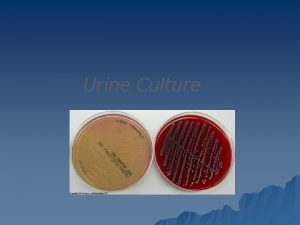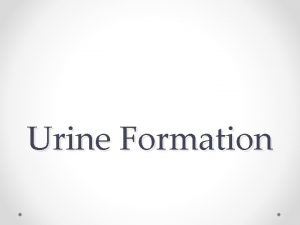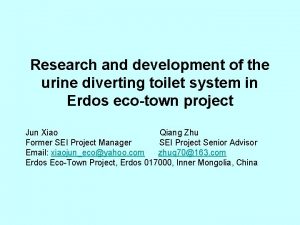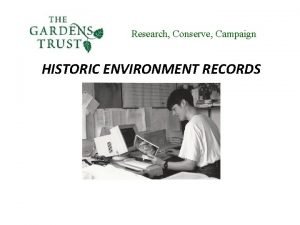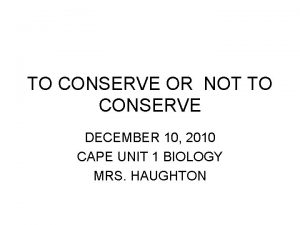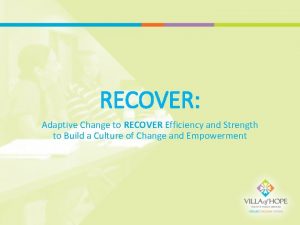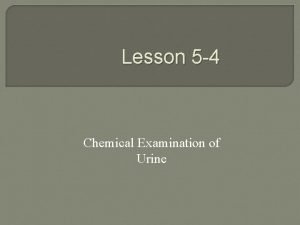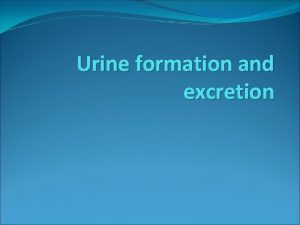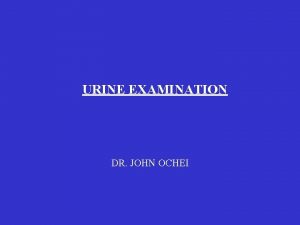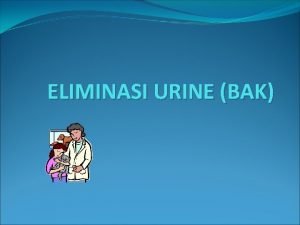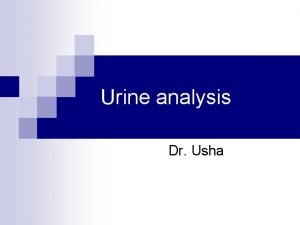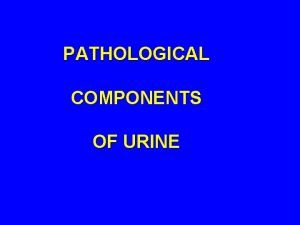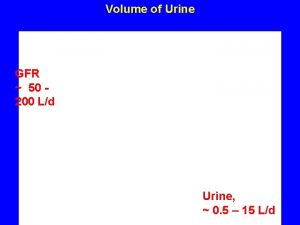Urine Diverting Toilets UDTs Can Conserve Energy Recover



































- Slides: 35

Urine Diverting Toilets (UDTs) Can Conserve Energy, Recover Nutrients and Reduce Estrogen Pollution Roger Babcock Jr, Krishna Lamichhane University of Hawaii at Manoa Civil & Environmental Engineering Dept Water Resources Research Center

Scientific Contribution Journal articles • Lamichhane, K. and Babcock, R. (2013), Survey of attitudes and perceptions of urine-diverting toilets and human waste recycling in Hawaii, Science of the Total Environment, 443 (2013) 749 -756 • Lamichhane, K. and Babcock, R. (2012). An economic appraisal of using source separation of human urine to contain and treat endocrine disrupters in the USA, J. of Environmental Monitoring, 2012, 14 (10), 2557 – 2565 • Lamichhane, K. (2007). On-site sanitation is the viable alternative to modern wastewater treatment plants, Water Science and Technology, 2007, 55 (1 -2), 433 -440. Journal articles (in preparation) • Lamichhane, K; Babcock, R. , Ecological sanitation: Soil fertility to food security, for: Waste Management & Research • Lamichhane, K. ; Babcock, R. , Use of ecological sanitation to improve water quality and food security in Kathmandu, for: Water Science and Technology

World Sanitation Condition Total = 2. 5 Billion Countries with large number of people (in million) without access to improved sanitation (Source: JMP, 2012)

Sanitation Issues Developing countries � � � � Lack adequate sanitation services (2. 5 billion) Mostly on-site (also open defecation) Domestic wastewater: main cause of water quality deterioration Incidence and prevalence of water borne (WB) diseases very high Preference to flush toilet and networked systems growing (“catchingup” syndrome) Economy, and technology not yet very supportive for central systems (e. g. Kathmandu: $312 per capita) Wastewater characteristics different (concentrated, microorganisms differ in both type and abundance) Developed countries � Adequate sanitation services � On-site systems (~20% homes in US), 3 rd most common source of GW contamination (includes nutrients) � WB diseases very rare but occasional epidemic outbreak (like Listeria in Colorado in 2011) due to unsanitary conditions � Preference to networked [sewers+WWTPs] systems (EPA, 2000) � Economy better, yet WWTPs not sustainable (energy and GHG emissions) � Wastewater very dilute

Urine Diverting Toilets (UDTs) Fig. 1: Dry UD toilet seat Fig. 2: Flushing type UDT seat Fig. 4: Dry/pour flush UDT (Squatting Pan) Fig. 3: Dual vault dry UDT

Urine Diverting Toilets Advantages • • • Major fraction of nutrients excreted (90% N, 50% P, and 55% K) � Main excretion route for chemicals: 95% estrogens, Pha. Rs, and X-ray contrast agent � Reduces waste volume (separate streams - if waste is intended to recycle locally) • Sludge volume reduction • Energy conservation (sewage treatment works are the single most energy consuming sector in local governments) • Disadvantages Treatment methods can be tailored to specific waste fractions � � � UDTs need behavioral changes System is more complex Health risks (handling waste) Special maintenance need for clogging (scaling: struvite, calcite, and hydroxyapatite) Local regulations may prohibit (Hawaii state law, section 14 -1. 6): mandatory to connect to a public sewer if accessible Retrofitting expensive Difficult in already developed areas with large investment on infrastructure Many parties involved: land project developers, housing corporations, local community, water/wastewater utilities, and health regulators

Hierarchy of Pollution Prevention: Pollution Reduction at Source (Pollution Prevention Act, 1990 ) Source reduction P 2 Hi era rch y UDT is in-line with P 2 Reuse or recycle UDT reduces pollution at the source UDT ensures recycling of useful materials and secured waste disposal Waste treatment Secure disposal Fig. 6: Pollution prevention hierarchy (modified from Abraham, 2006)

Presentation Outline Developing Countries (Nepal) Hypotheses � UDT reduces pollution load to receiving water bodies UDT has the potential to save water and reduce subsequent wastewater volume � UDT can contribute to reduce poverty and hunger (food security) UDT has the potential to separate and contain a majority of EDCs � Estrogenicity removal from source separated urine is more energy efficient than removing it from bulk wastewater � UDTs will be socially accepted if publicized � UDT has the potential to save water � � � Developed Countries (USA) UDT can improve soil fertility

Part 1 ECONOMIC APPRAISAL OF SOURCE SEPARATION FOR CONTROL OF EDCS

Why Urine Separation? �Only about 1% of sewage volume ◦ To contain major fraction of nutrients and chemicals like estrogens, Pha. Rs, and X-ray contrast agents ◦ To reduce wastewater volume ◦ To employ treatment methods tailored to specific waste fraction

ESTROGENIC POTENTIAL (EP) OF NATURAL AND SYNTHETIC ESTROGENS Table 1: Human daily excretion of natural estrogens Included in CCL 3 (EPA, 2008), possibility of future regulatory limits • at ng/l concentration • Estrogenic E 2: Causes almost 100% EP in wastewater effluent • • EP almost 1, 000 times more potent than known EDCs (Routledge et al. , 1998) Chemical Av. excretion (µg/d) Sewage concentration (ng/l) Estrogenic potential Estrone (E 1) F: 11. 29 M: 4. 11 30 -80 1/40 Estradiol (E 2) (17β) F: 4. 96 M: 1. 58 5 -30 1 Estriol (E 3) F: 8. 55 M: 1. 58 80 -300 1/6 Ethinyl estradiol (EE 2) (17α) F: (20 -30) µg/pill <10 3 Phenols (OP, BPA) 1/1000 – 1/100

Nutrient Recovery: Ecological Thinking in Sanitation Rural areas grow food Nutrients depletion Food consumed in urban centers Transportation to city centers Excretion (nutrients) Discharge into water bodies / land fill Growth Closed loop Eutrophication (pollution) Solid line: One-way flow of nutrients Dashed line: possible route for nutrient capture Fig. 7: Ecosan closing the nutrient loop

Micropollutants (MPs) Removal Alternatives Sanitation Alternatives Legend Recycle No recycle Urine Diversion (UD) system Conventional No recycle Sewer Network On-site (Pit, VIP, ST, ATU) Urine Collection Fecal matter Collection Storage & Transport Treatment (Composting) Treatment (MPs removal) Urine Collection Fecal matter Grey water Collection Treatment (Const. wetland) ~60% ~40% Sewer line Nutrient and water reuse Toilet waste + Grey water Complete recycle (on-site) Partial recycle Effluent Water reuse Digestion Biosolid use Sludge Biosolid use Digestion Biogas (CH 4) WWTP MPs removal Biogas (CH 4) WWTP Fig. 8: Sanitation alternatives to contain (or treat) estrogens

UDT Savings Energy for 99% estrogenicity removal Separated urine: 12 k. Wh/p. y Bulk WW: 25 k. Wh/p. y Total family savings $100/y Table 2: Summary of yearly savings by an average family in the USA Savings Quantity Unit cost ($) Saving s ($) 1 Drinking water 37. 4 m 3 0. 93/m 3 34. 78 2 Wastewater volume 37. 4 m 3 1. 03/m 3 38. 52 3 Nutrient recycling 10. 14 kg Savings on water and wastewater (dual flush UDT Vs. US toilets) Nutrients only in 60% urine (40% urine to existing WWTPs) 9. 78 N 7. 63 kg 0. 94/kg (7. 17) P 0. 94 kg 1. 353/kg (1. 27) K 1. 57 kg 0. 852/kg (1. 34) 4 Energy conservation 166 k. Wh 0. 10/k. Wh 16. 6 5 GHG emissionsΩ 100 kg 0. 016/kg Average family size: 3. 14 No. of toilets: 2. 5/house 1. 59 (Carbon Credits) Ω Total savings Carbon dioxide equivalent (CO 2 eq. ) 101. 57

UDT System Configuration Fig : UD system (single house) Fig 9: UD system (multi storied apartment buildings)

Part 2 SOCIAL ACCEPTABILITY OF UDTS

UDT System Use Other Parts of the World History of about 20 yrs (Sweden) � High acceptability in some European and Scandinavian countries (concerned about MPs in urine) � Mixed acceptance in developing countries but perception changed with rigorous discussions � UDT in developing countries mostly for nutrient recovery � City‐scale UDTs in Dongshen, China � Mostly dry UDT and on-site mode � GIZ head quarters, ecohome (Sweden) � USA Relatively knew � No acceptability study known � No large scale use known as of today � Dry UDT may not work � Florida State Department of Health (P recovery) � UD is proposed in Master Plan of San Jose/Santa Clara Water Pollution Control Plant, (City of San Jose) (nutrient and WW volume reduction) � PHLUSH (Portland, Oregon) �

Social acceptability of UD system On-line survey conducted to gauge acceptability of UD toilets � 10 survey questionnaires (8 binary type, 2 multiple choice type) � Response rate (13%), N = 132 � � � Automatic response recording (6 categories: age, sex, education, occupation, religious affiliation, and ethnicity) Variables tested at 5% significance level (p = 0. 05) (SAS, Cary Inc. ) Respondent: mostly (62%) younger population (19 -29 yrs category) � Only 22% knew UD existed � 86% would try UD if free � Only 61% willing to pay extra ($50) 100% 14 20 39 35 80% 78 60% 40% No 86 80 65 Yes 61 20% 22 0% Knowledge of Aware of Allow to Willing to pay wastewater UD toilet nutrient value install a UD at $50 to install treatment of human home, if for a UD at home waste free Fig. 9: Participants’ knowledge regarding WW treatment and UDT system and willingness to pay

PEOPLES PERCEPTION OF UDTS (SURVEY CONTD. ) Other NA (Not Applicable) Want to try new technology Motivating factor for UDTs • 80% water conservation, nutrient recovery (70% ) and want to be green (65%) • 38% want to try new technology The factors that would discourage for using UDT Not much information (55%), Expensive (46%) and not tested technology (32%) Recycles nutrients for farming Conserves water Want to be green 0% 10% 20% 30% 40% 50% 60% 70% 80% 90% Fig. 10: Motivating factors for UDT use Other NA Not much information Expensive Complicated Technology not tested 0% 10% 20% 30% 40% 50% Fig. 11: Factors that discourage UDT use 60%

Conclusions from Survey � No significance difference between male and female population in all statements but women were more willing to pay extra (p = 0. 252) � Caucasian were willing to pay extra ($50) for a UDT and was significant (p < 0. 05) � Majority recycling of the responders liked the idea of human waste � Majority of the responders (from all 6 categories) believed that human waste can be used as fertilizer (though, difference in mean was not significantly different, p > 0. 05) � The difference in mean did not significantly differ with sex and occupation in terms of health risk (feces considered posing more health risks than urine, p > 0. 05).

Conclusions from Survey � However, the mean difference was significantly different in other 4 categories education, age, religious affiliation, and ethnicity. � People with higher education, and relatively older considered urine much less risky, p<0. 05. � Christians and Asians considered urine and feces pose similar health risks p<0. 05. � Acceptability � Rigorous of UD increased with age and income discussion/meetings are suggested before introducing UDTs and urine recycling as Christian and Asians (majority population) considered urine posing similar health risk like that of feces

Part 3 ECOSAN FOR SOIL FERTILITY & FOOD SECURITY

Ecosan for Food Security � Population growth rate in developing countries: exceeds agricultural yield increase rate � Urban food: energy, land, water and greenhouse gas emission-intensive � 40 -60% of crop yields are produced using commercial fertilizer � Nutrient mining (phosphorus mining) (fertilizer not affordable to many) � 41 countries with undernourishment (hungry) rate 20% or higher � 780 million without improved water, 2. 4 billion without adequate sanitation services � Water use and wastewater (WW) generation rate 2 times the population growth rate � Domestic WW main cause of poor water and environmental quality

RESULTS • Many crops farms in many developing countries do not get sufficient fertilizer 260 240 220 200 180 decreased with per capita arable land holdings (poorly correlated, R 2=0. 028) • Nutrient excretion rate will increase in the future along with dietary energy supply (DES) increase Supply 140 120 100 2007/08 2008/09 2009/10 2010/11 2011/12 Year Fig. 12: World fertilizer balance (FAOSTAT, 2011) • Agricultural • Yield Demand 160 3750 Calorie intake (kcal/p. d) yield increases with fertilizer application rate highly significant (p < 0. 001) Fertilizer (million Mt) First Model (N=170) • Global fertilizer stock exceeds demand 280 3500 3250 3000 2750 2500 2250 2000 1965 1975 Developing 1985 Year World 1998 2015 2030 Industrialized Fig. 13: Global food consumption (DES) trend (FAOSTAT, 2011)

Results: DES and GDP Second Model (N=170) • DES increase with GDP rise is very highly significant (p < 0. 001) • DES increase rate slows at around $5, 000 (GDP) • 22 countries: nutrients excreted in urine more than average annual fertilizer application rate • Food habits changing from vegetable based diet to meat and milk based diet due to GDP rise Fig. 13: Relation of calorie intake (DES) to GDP

Results The average fertilizer application rate in many developing countries is much less than nutrients excreted only in urine (Table 3, the values in parenthesis are fertilizer equivalent excreted only in urine). Table 3: Average fertilizer application rate, yield rate, DES, and nutrient excretion

Results There is a huge potential of yield increase due to waste (or urine recycling) which would also help reduce water quality deterioration Table 4: Average fertilizer application rate, yield rate, DES, and nutrient excretion

Part 4 WATER & SANITATION IN KATHMANDU NEPAL

Kathmandu Valley: Environmental Pressures Fig. 14: Bagmati River and WWTP locations

DPSIR Framework (EU) Responses Drivers (policies, laws, rules, regulations) (economic, social, political) Policies/ targets Causes Impacts Pressures (river water quality, environmental /public health) (emissions: air, water, and soil pollution) Pollutants State (physical, chemical and biological) Quality Health, ecosystems and materials Fig. 16: DPSIR framework for integrated environmental management

MAJOR ENV. STRESSORS • Sewage discharge (water supply system not meeting demand) • Solid waste disposal • Irrigation (river flow reduction) • Squatter settlements • Industrial effluent • Land use change

MINOR ENV. STRESSORS • Cremation sites • Animal slaughtering • Washing and bathing • Sand quarrying • Water extraction for irrigation • Agricultural runoff Fig. 17: Cremation Fig. 19: Sand quarrying Fig. 18: Animal slaughtering

BAGMATI RIVER SYSTEM BOD SINKS Numbers in parenthesis show the calculated BOD stabilized by respective sectors Others (MSW, cremation, animal slaughtering, sand quarrying) Open defecation (0. 2 t/d) Pit latrine (0. 8 t/d) (17. 3 t/d) River bed and bank deposition (21 t/d) River flow (35 t/d) Total domestic wastewater BOD generation (125. 5 t/d) Leaching groundwater Septic tank (15. 68 t/d) (ODs, PL, STs) (9 t/d) Total BOD produced in Valley: 125. 5 t/d Total sinks: 108. 2 t/d Other: 17. 3 t/d Sewer leakage (8. 42 t/d) Irrigation WW treatment (7. 63 t/d) (agriculture application) ( 10. 5 t/d) Fig. 20: Partition of domestic wastewater BOD produced in Kathmandu

DPSIR model � Help identify drivers and pressures on the environment � Helps for better planning for prevention, and control measures � Introduction of appropriate (and affordable) sanitation system is a must to restore life (water quality) in Bagmati River system � Remedial measures should be taken starting from relatively easier sectors like ODs, PLs and STs (part to whole) and to more resource and technology intensive (sewers and WWTPs) � Education and awareness programs for P 2 works (waste minimization, recycling) � New building permits: effective waste management plan

Thank you QUESTIONS?
 Blowhole stoma
Blowhole stoma Forward buying and diverting
Forward buying and diverting Forward cg aft cg
Forward cg aft cg Image restoration theory
Image restoration theory Dari hasil tes urine ternyata urine pak amir
Dari hasil tes urine ternyata urine pak amir How can we conserve the biosphere
How can we conserve the biosphere Hundertwasser toilets nz
Hundertwasser toilets nz Elizabethan hygiene
Elizabethan hygiene Williamwood high school
Williamwood high school Withdrawal of status is the part of which theory *
Withdrawal of status is the part of which theory * What exactly does gatsby want to recover?
What exactly does gatsby want to recover? Laboratory hood accessories
Laboratory hood accessories Automated key recovery
Automated key recovery Right to recoup shortworking means
Right to recoup shortworking means Recover your life
Recover your life Prepare mitigate respond recover
Prepare mitigate respond recover Recover pori
Recover pori Recover a tree from preorder traversal
Recover a tree from preorder traversal How did the weimar republic recover
How did the weimar republic recover Sql server management studio recover unsaved queries
Sql server management studio recover unsaved queries Inelastic collision
Inelastic collision Sterilizzatore per conserve casalinghe
Sterilizzatore per conserve casalinghe Tap water
Tap water Podrias romper un alambre estirandolo
Podrias romper un alambre estirandolo Perfectly inelastic collision definition
Perfectly inelastic collision definition Conservation of biodiversity meaning
Conservation of biodiversity meaning Disfore
Disfore Felice conserve
Felice conserve Stream load
Stream load Energy energy transfer and general energy analysis
Energy energy transfer and general energy analysis Energy energy transfer and general energy analysis
Energy energy transfer and general energy analysis Urine chain of custody form
Urine chain of custody form Principle of fouchet's test
Principle of fouchet's test Hyaline casts in urine
Hyaline casts in urine W
W Normal specific gravity of urine
Normal specific gravity of urine
